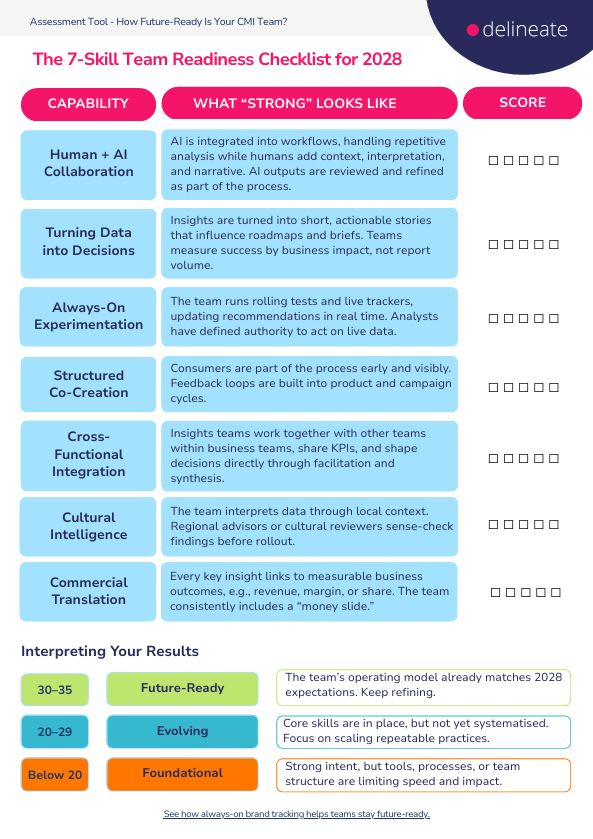On September 2, 2025, LEGO announced that 146 fan-designed sets had crossed the 10,000-supporter threshold on its Ideas platform, qualifying them for official review. What began in 2008 as a playful experiment in fan engagement has become one of the company’s most effective innovation engines. Several of the Ideas sets are now bestsellers, proof that consumer energy can be converted into commercial outcomes.
LEGO achieved this by building structure around participation. Ideas has clear submission rules, a transparent voting system, and a formal review process that turns enthusiasm into viable products. What looks like engagement from the outside functions internally as a disciplined form of R&D.
Most CMI teams still operate in a different gear. Quarterly trackers, static dashboards, and post-campaign surveys remain the default rhythm. Meanwhile, executives are shifting budgets, adjusting prices, and testing creative in cycles measured in weeks or even days.
The scale of the gap is visible in global data. The World Economic Forum projects that 40% of job skills will shift by 2030. Gartner reports that only 53% of marketing decisions are analytics-informed – a ratio unchanged in five years. AI adoption in marketing is forecast to double by 2028, yet many insights functions haven’t evolved at the same pace.
Some organizations are adapting; many are not. By 2028, seven skills will determine whether insights teams drive growth or watch from the sidelines.













